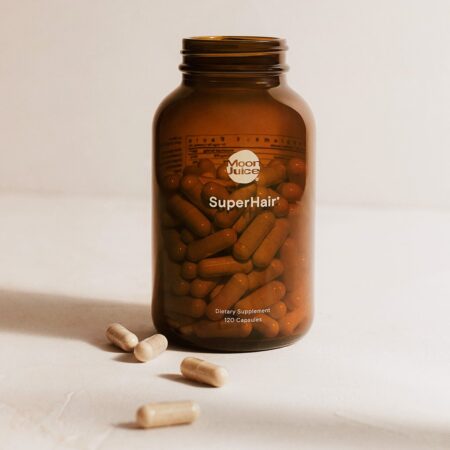How to cope with postpartum hair loss
The why, the how—and the what to do about it.

criene/Twenty20
We independently select and share the products we love—and may receive a commission if you choose to buy.
So you’ve got the baby, you’ve (temporarily) nailed the sleep schedule and life is finally feeling a bit more familiar. Then one morning, you finally decide to shower, and a small mammal shows up in your drain… or at least a small mammal’s hair.
My postpartum hair loss experience took me by surprise… I’ve always shed a lot for a typical human, but it picked up a bit more than usual after my baby arrived. Yet I had no idea what was in store for me upon that 3-month mark. A handful of hair here and there became the norm… THE NORM! It was shocking to say the least but I took it all in stride, and you should too. Here’s how to cope.
Why postpartum hair loss happens
While this is a completely normal and—luckily—temporary issue, it’s nice to have some science-based info for those times you think you might actually be going bald. Like with most pregnancy-related things, postpartum hair loss is due to hormonal changes. During pregnancy, estrogen levels rise, which stimulates the dramatic increase in the ‘growth phase’ of hair.
After birth, however, the hormones shift yet again, and your hair enters its ‘resting phase,’ which is followed, about three months later, by shedding and regrowth. These phases are typical of hair growth, but they become very intense thanks to the upsurge of hormones during after pregnancy.
Pro tip: “Choose a healthy, organic conditioner that won’t add weight to your hair, and one that also enables you to skip the shampoo between washes,” says Fabian Lliguin, co-founder and CEO of Rahua. Rahua’s Voluminous Conditioner works wonders for this, and thanks to its Omega-9 Amazonian molecules, it also reduces hair loss while maintaining the essential moisture and oils on the hair and scalp.
Postpartum hair thinning happens, too
Once that 3-month post-pregnancy hormone dip hits, you’ll most likely notice an intense thinning of the hair. While it might feel like you’re losing every hair you’ve ever had, you are in fact only shedding the excess you accumulated throughout the pregnancy.
Pro tip: If you feel like you’re struggling with thinning hair, try using dry shampoos, texturizing sprays and products containing bentonite clay, which helps add grit and hold to hair. These will keep your postpartum mane looking (and feeling) full.
What’s up with the postpartum baby hair
Regrowth is a beautiful word for most of us, but for new mothers it means a thousand crazy baby hairs crowning your head like the queen you truly are. This is yet another gift your sweet hormones are bestowing upon you! As your hair cycles into its regrowth stage, you may find yourself fighting the unending battle against the dreaded disappearing hairline and those newly acquired ‘baby hairs.’ No amount of hairspray, gel or cement will get those tiny, fine hairs flat, and product will only weigh the hair down, giving you a deflated effect. Resist the temptation to shellac! It will take some time for them to grow out, but grow out they will.
Pro tip: Keep those strands down! Stylists recommend avoiding ponytails and top knots as much as possible to minimize the appearance of the fine hairs around your hairline. Also think about requesting deep layers or face framing texture from your hairstylist, this will help keep the baby hairs under wraps. If you find yourself with a quickly changing hairline, some stylists will recommend a full fringe.
The best products for postpartum hair
My best advice to any new mom—grin and bear it. Consider your new hair your postpartum halo. And know, as with much of motherhood, this too shall pass. But until then, here are five of the best hair products and supplements to help you through this wild hair phase.
A version of this post originally appeared on April 8, 2021. It has been updated.







